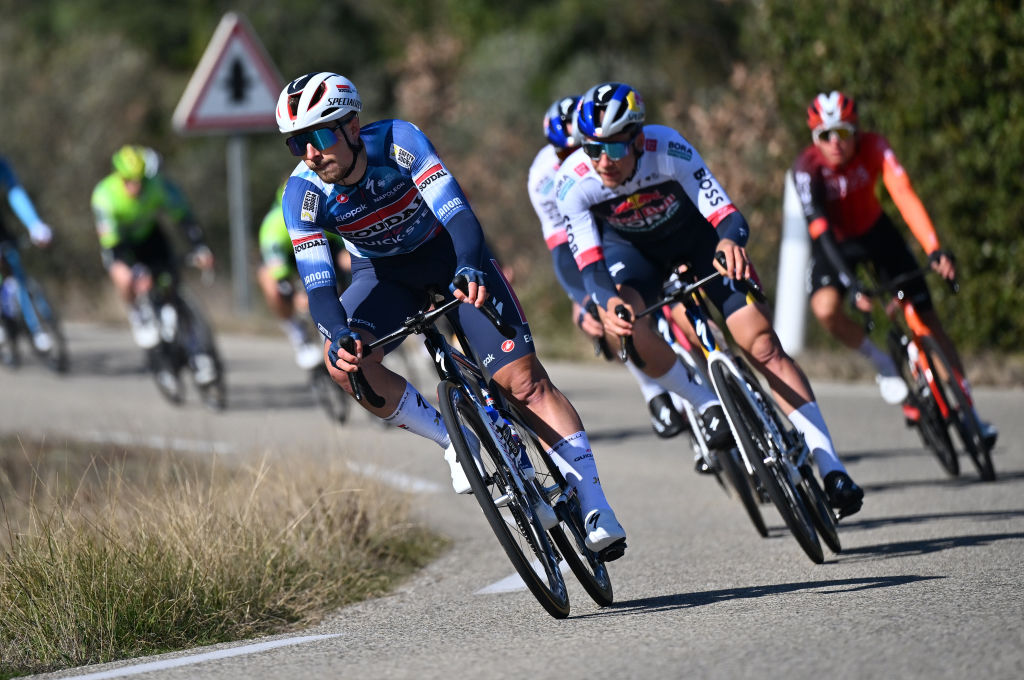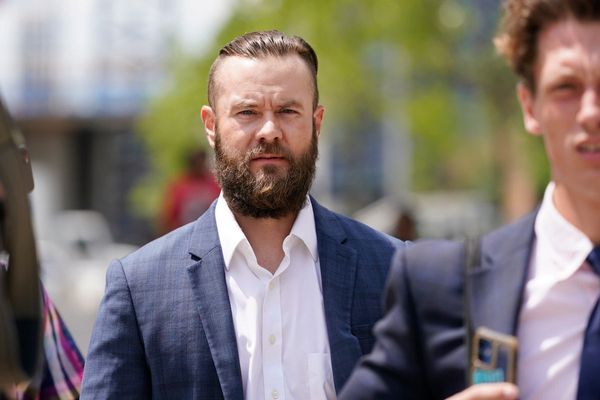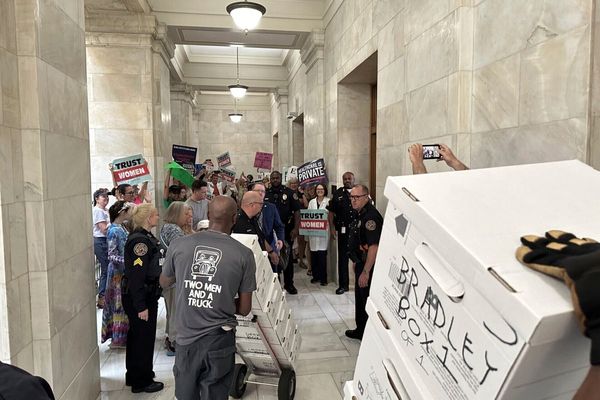
Soudal-QuickStep CEO Jurgen Foré has called for greater safety at races following Martin Svrček's crash at Milan-San Remo, which left the Slovakian with a fractured collarbone, scapula, and ribs.
Svrček crashed on the descent of the Cipressa late in the 289km Monument, going over a guardrail and falling three metres down the other side. Since his crash came as he was chasing back to the peloton alone, his accident went unnoticed, though luckily, he remained conscious and was able to contact his team via radio.
Soudal-QuickStep directors stopped and walked back up the hill before finding Svrček and giving him first aid. As a result of his injuries, the 22-year-old now faces a long spell on the sidelines.
In an open letter written on Tuesday, Foré outlined the circumstances of the crash and the aftermath. He then outlined several measures that may help prevent similar incidents in future.
"I don't want to point fingers at the race organisers. It was a crash resulting from several factors. But I cannot stay quiet either," he wrote, according to reports in Het Laatste Nieuws and Sporza.
"Martin crashed on the descent of the Cipressa as he tried to join the peloton. On a technical bend, he went over the guardrail and fell about three metres down. He was all alone, and there were no cars nearby that could have seen him.
"Fortunately, he was conscious and called for help over the team radio. Our leaders immediately had the reflex to stop the car and walked back to look for Martin. After 500 metres, they found him and were able to give him first aid.
"I felt particularly small when I stood next to Martin's bed in the emergency room in San Remo. We can't ignore this and move on. We must do everything we can to prevent the serious consequences of these types of crashes, or better yet, avoid these crashes altogether."
Foré called the crash "a racing incident", noting that he didn't blame race organisers RCS Sport. The Belgian, who this year took over as Soudal-QuickStep CEO from Patrick Lefevere, said that the team is establishing an 'internal safety group' in which they can find ways to improve safety.
"We have to do better to avoid such accidents in the future," Foré wrote. "Three months into the 2025 season, our team has three riders who will be out for months [Svrček, Antoine Huby and Remco Evenepoel – Ed.]. That is why we are bringing together a group of riders in an internal safety group.
"In that group, we will look at what we can do ourselves to improve safety in our team. That group can also be a sounding board for our bike, equipment and clothing partners."
In addition, Foré outlined several safety measures that he thinks cycling should implement across the sport.
He said cycling should "embrace technology", including ensuring that radios and earpieces are in place at all races, and also advocated for "no-brainer decisions", including more course safety checks, limits on equipment such as gearing and handlebar width, and including more circuits in races.
"Let's embrace technology," he wrote. "For example, we can never again finish a race without communication with the riders. Earpieces are a crucial source of information for the riders, enabling them to call for help.
"They are an essential tool to provide our riders with safety information, but it is also crucial to give riders the opportunity to ask for help if they get into trouble. A tracking system would give the race organization and the teams a tool to see in real time if a rider gets into a difficult situation and to send help immediately if necessary.
"It could also be useful to analyse racing incidents directly after the race and give the organisers feedback to make their race safer."
It remains to be seen whether any other teams will join Soudal-QuickStep in calling for these safety measures or whether the UCI will make any changes in response.
For his part, Svrček took to Instagram to give an update on his condition on Tuesday, outlining the list of injuries he suffered in the crash.
"I wanted to give you an update after my crash on Saturday," he wrote. "It was a hard moment, and without going into details, I suffered multiple fractures to my collarbone, scapula and some ribs, and I will now have to take some time to recover.
"I am very grateful to all the doctors and nurses who looked after me and were able to help prevent making the incident worse than it was. I am also very grateful to the Soudal-QuickStep staff and all my teammates who have shown me the love, support and spirit that the Wolfpack is famous for."
Read on for the full list of Foré's main safety arguments.
Jurgen Foré's proposed safety measures
- Reducing the number of gears, width of handlebars, and position of the gear shifters. Also, better safety checks on the course, especially at dangerous points.
- Never race again without team communication and, therefore, earphones.
- A tracking system within the race that allows each rider to be followed at any time. Including direct feedback.
- Improved helmets and protective clothing, starting in training – even at the expense of aerodynamics if necessary.
- If necessary, ride the same circuits more often if this makes it easier to guarantee optimal safety for the peloton.
- All stakeholders must take their collective responsibility.







